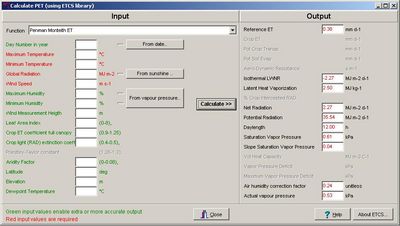Revision as of 14:48, 3 August 2006; view current revision
←Older revision | Newer revision→
Selection of Reference Period
Introduction
In order to evaluate crop growth, historical data need to be present for the area under study. In different countries, datasets differ substantially. Some countries have a long record even dating back into the years 1800. Some countries have experienced poverty, war or other disruptions in record taking and keeping and do hardly have any records.
WMO (The World Meteorological Organization) has initiated many so-called data rescue projects. These projects aim at gathering (agro)meteorological data and entering them into databases. See an example of one of these projects in South East Asia: http://www.vsamp.com/resume/publications/Page_et_al_2004.pdf
The reference period should at least reflect the latest 30-year climatological periods defined by WMO (1961-1990 or 1970-2000). The second priority level would be since the main meteorological instrumented period (1870-2000), whereas the third level would be since earliest measurements (about 1750).
Crop data
- Crops (name, varieties and areas)
- Cycle lengths
- Phenological stages
- Crop coefficients.
- For irrigated crops : bund height.
Soil data
- Water holding capacity
Wheather data
- Rainfall
- Parameters to calculate the potential evapotranspiration (ET0) or measured potential evapotranspiration.
In AgrometShell the potential evaporation can be calculated in various ways. The program has a manual calculation function with which to check whether it is possible to calculate the ET0 with a certain number of input parameters.
</blockquote>

